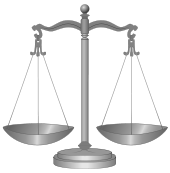- No case to answer
-

Criminal procedure Criminal trials and convictions Rights of the accused Fair trial · Speedy trial
Jury trial · Counsel
Presumption of innocence
Exclusionary rule1
Self-incrimination
Double jeopardy2Verdict Conviction · Acquittal
Not proven3
Directed verdictSentencing Mandatory · Suspended
Custodial
Dangerous offender4, 5
Capital punishment
Execution warrant
Cruel and unusual punishment
Life · IndefinitePost-sentencing Parole · Probation
Tariff6 · Life licence6
Miscarriage of justice
Exoneration · Pardon
Sexually violent predator legislation1Related areas of law Criminal defenses
Criminal law · Evidence
Civil procedurePortals Law · Criminal justice 1 US courts. 2 Not in English/Welsh courts. 3 Scottish courts. 4 English/Welsh courts. 5 Canadian courts. 6 UK courts. In UK law, at the close of the prosecution's case during a criminal trial, the defendant may submit to the judge or magistrate that there is no case for the defendant to answer. If the judge agrees, then the matter is dismissed and the defendant is acquitted without having to present any evidence in their defence. If the judge does not accept the submission, the case continues and the defendant must convince the jury of their innocence in order to be acquitted. Because a judge's refusal to uphold such a submission may potentially bias a jury's decision, a submission of No Case to Answer is usually heard in the absence of the jury.
Contents
England and Wales
General test
The general approach to be followed was described by Lord Lane CJ[1]:
(1) If there is no evidence that the crime alleged has been committed by the defendant, there is no difficulty. The judge will of course stop the case. (2) The difficulty arises where there is some evidence but it is of a tenuous character, for example because of inherent weakness or vagueness or because it is inconsistent with other evidence. (a) Where the judge comes to the conclusion that the prosecution evidence, taken at its highest, is such that a jury properly directed could not properly convict upon it, it is his duty, upon a submission being made, to stop the case. (b) Where however the prosecution evidence is such that its strength or weakness depends on the view to be taken of a witness's reliability or other matters which are generally speaking within the province of the jury and where on one possible view of the facts there is evidence upon which a jury could properly come to the conclusion that the defendant is guilty, then the judge should allow the matter to be tried by the jury.... There will of course, as always in this branch of the law, be borderline cases. They can safely be left to the discretion of the judge.
In a trial in the Crown Court, a submission by counsel that there is no case to answer is heard in the absence of the jury. A submission may be made at the close of the prosecution case or at a later stage[2]
Application in identification cases
Main article: Eyewitness identificationWhen, in the judgment of the trial judge, the quality of the identifying evidence is poor, as for example when it depends solely on a fleeting glance or on a longer observation made in difficult conditions (for example, in bad weather, poor lighting or in a fast moving vehicle), the judge should withdraw the case from the jury and direct an acquittal unless there is other evidence which goes to support the correctness of the identification.[3]
Application in confession cases
Main article: confession (legal)See MacKenzie (1992) 96 Cr App R 98.
Application where it is not clear which crime has been committed
Where it is clear that an accused has committed an offence but it is impossible to say which offence was committed, neither crime can be left to the jury.[4]
Similarly, where it is possible to say that one defendant definitely committed a crime, but it is not possible to say which defendant and there is no evidence of joint enterprise, both must be acquitted.[4]
Application where part of the evidence is silence
Main article: Right to silence in England and WalesThere may be no conviction based wholly on silence[5] and the judge must withdraw a case from the jury if the only evidence tendered by the prosecution is the defendant's silence in interview.
Scotland
The procedure is governed by section 97 of the Criminal Procedure (Scotland) Act 1995, which states that:
(1) Immediately after the close of the evidence for the prosecution, the accused may intimate to the court his desire to make a submission that he has no case to answer both—
- (a) on an offence charged in the indictment; and
- (b) on any other offence of which he could be convicted under the indictment.
References
- ^ Galbraith [1981] 1 WLR 1039
- ^ Boakye (12 March 1992, CA, unreported).
- ^ R v. Turnbull [1977] QB 224.
- ^ a b Bellman [1989] AC 836.
- ^ Criminal Justice and Public Order Act 1994, s. 38.
Categories:- Criminal procedure
- Evidence law
Wikimedia Foundation. 2010.
